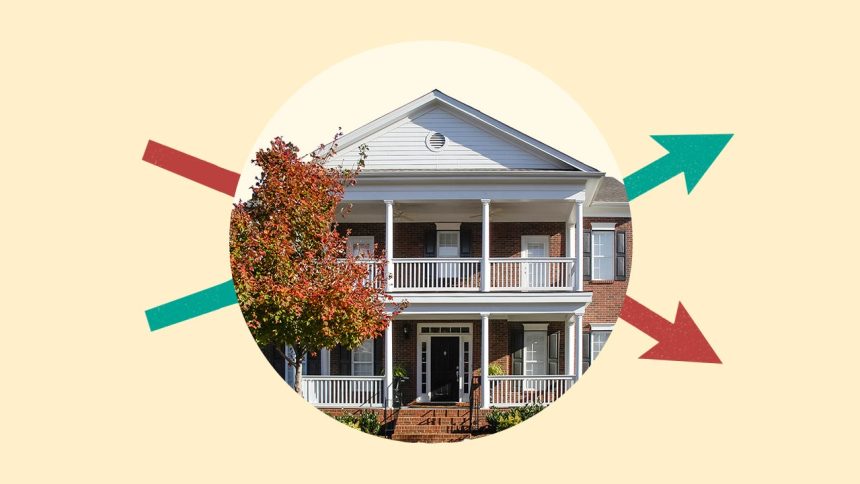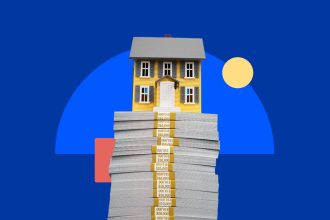There’s no escaping the fact that homes in the U.S. have been getting less and less affordable. According to the National Association of Realtors (NAR), the median price of an existing home sold in April was $414,000. That’s up almost 3 percent from the March price, and almost 2 percent from April 2024. Meanwhile, the U.S. Census Bureau reported that the median price of a new home sold during the month was $407,200, almost a full percentage point more than in March.
Despite the increases, though, neither of these median prices were a record high. In fact, existing home prices were higher from May through August last year, and new home prices were as high as $429,600 in January. But for prospective homebuyers today, even these off-peak prices pose significant affordability challenges — probably the reason that home sale totals remain muted compared to where they were as recently as 2022. Existing home sales in April sat at an annualized rate of 4 million units sold, the lowest rate since 1995, when there were over 72 million fewer people in the country.
A larger population and fewer home sales adds up to a rate of homeownership that is slowly — but steadily — declining. The homeownership rate in the first quarter of 2025, 65.1 percent, is just about a full point down from in the first quarter of 2023. Can anyone afford to buy a home anymore?
The affordability issue
In its June 2024 report, “Rent, House Prices and Demographics,” the U.S. Department of the Treasury noted that “Since 2000, housing costs have been rising faster than median household income. Over the entire period, inflation-adjusted house prices rose about 65 percent. In contrast, inflation-adjusted median household income hardly rose over the whole time period.”
Another assessment shows that home prices have risen at roughly twice the rate of wages: Since 2020, prices have increased by 47 percent, according to a study by Harvard University’s Joint Center for Housing Studies, while wages have grown by just 20 percent. This has made affordability extremely challenging for prospective homebuyers: The Harvard study notes that in 2024, the median price of a home in the U.S. was roughly five times the median income — a sharp increase from pre-pandemic days, when it was about three times the median income.
How bad is affordability? According to the Federal Reserve Bank of Atlanta, Q1 2025 was the worst it’s been in 20 years. The Bank bases its affordability index on the median household income that would be required to own a median priced home after a 10 percent down payment, while spending no more than 30 percent of the monthly income on housing costs (principal, interest, taxes and insurance). Its calculations suggest that a median priced home would consume almost 46 percent of today’s median household income.
Higher rates exacerbate the problem
Rising home prices are a big part of the affordability conundrum, but not the only part. Property taxes increased along with home prices, for example. And mortgage rates, which had fallen to historically low levels early in the pandemic, doubled over the course of just a few years, rising from the low 3 percent range to today’s range of around 7 percent.
Beyond making it much more expensive for homebuyers to finance a purchase, these higher rates created another problem: They discouraged homeowners with low mortgage rates from listing their homes for sale, reducing the inventory of properties on the market. This exacerbated what was already a supply shortage, causing prices to rise even further, and creating a double whammy of sorts for prospective buyers to navigate.
To make matters even worse, homeowners’ insurance premiums have soared, rising by an average of 24 percent over the past three years, according to a recent report by the Consumer Federation of America.
Other indicators of worsening affordability
Poor affordability has led to weakening homebuyer demand: Existing-home sales plummeted in the early 2020s and have yet to recover.
Another indicator of the affordability challenge is the median age of first-time and repeat homebuyers, which are both at record highs. NAR data published in the first quarter of 2025 noted that the age of first-time buyers, which historically had ranged between 28 and 33, had reached 38, while the median age of repeat buyers was 61. Limited affordability also reduced the percentage of home sales to first-time buyers, who accounted for just 24 percent of purchases in the NAR report, down from the historical average of 40 percent. It seems the prohibitive cost of buying a home — coupled with student loan debt, high rent and difficulty saving enough money for a down payment — is causing young buyers to delay their first purchase.
Fannie Mae’s April Home Purchase Sentiment Index reflected this glum outlook among potential homebuyers: 77 percent of the respondents felt that now is a bad time to buy a home.
Will home affordability ever improve?
Home prices, over time, generally increase. In fact, looking back over the past 60 years, median sales prices have increased steadily, usually only falling slightly at the beginning of a recession. Only once, during the Great Recession from 2007 to 2009, did prices fall by as much as 20 percent — so buyers hoping for a similar crash in home prices are likely to be disappointed.
Four signs of hope
That said, there are signs that affordability may be poised to improve at least marginally:
- Slower home-price growth: While home prices continue to rise, they’re doing so much more slowly — April’s 1.8 percent annual increase was well below the 5.7 percent annual home price increase reported in April of last year, and also below the country’s 2.3 percent rate of inflation.
- Higher wages: Meanwhile, household income is on the rise. Wages and salaries increased by 3.4 percent from March 2024 to March 2025, according to data from the U.S. Bureau of Labor Statistics.
- Increased inventory levels: One of the reasons home prices are moderating is that the inventory of homes for sale is increasing rapidly, beginning to resolve the supply/demand imbalance that has been a major contributor to soaring home prices. While prices continue to rise in markets with limited inventory — mostly states in the Midwest and Northeast — parts of the country where inventory has risen dramatically, like the Gulf Coast states and parts of the Western region, have seen prices flatten, and in some cases even decline.
- More stable mortgage rates: And finally, while mortgage rates are still at almost 7 percent for a 30-year fixed-rate loan, they were above 7 percent a year ago, and many economic forecasts project that rates could be at or below 6.5 percent by the end of 2025.
None of these factors will instantly make home purchases affordable for everyone hoping to become a homeowner. But the combination of all four at least provides hope that more people will be able to afford more homes in the not-too-distant future.
Read the full article here














